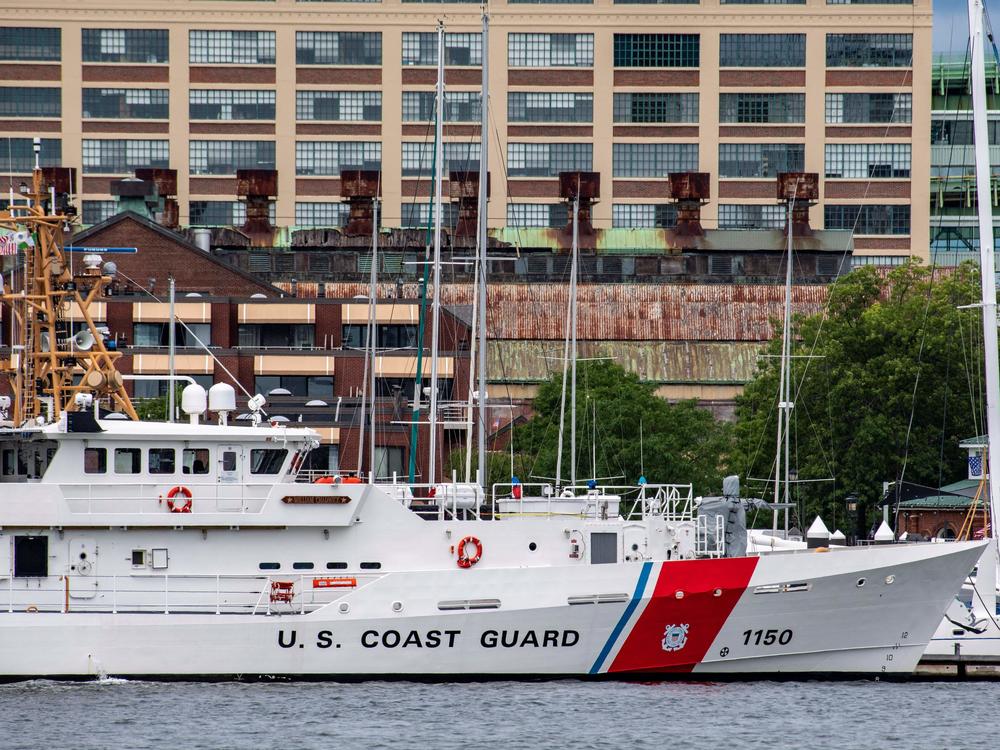Section Branding
Header Content
'Tiny sub, big ocean': Why the Titanic submersible search is so challenging
Primary Content
Updated June 20, 2023 at 9:28 AM ET
The search continues for OceanGate's Titan submersible, the vessel that went missing on Sunday during one of its deep sea tourist trips to the Titanic shipwreck.
Officials say the submersible lost contact with its support ship about 1 hour and 45 minutes after submerging into the Atlantic Ocean and about 435 miles south of St. John's, Newfoundland, in Canada.
There are five people on board, and not much time left to find them. The U.S. Coast Guard estimated Monday afternoon that the vessel had somewhere between 70 and 96 hours of oxygen left.
The U.S. and Canadian Coast Guards are scouring the area, using aircraft and sonar devices to scan the ocean and detect any sounds from below the surface — under which the Titanic wreckage sits nearly 13,000 feet down.
David Marquet, a retired U.S. Navy submarine captain, says there are many factors that make this search and rescue mission particularly challenging: It's a "tiny sub, big ocean and extremely deep water and several hundred miles away from the coast."
"It's basically imagining a spacecraft disappeared on the far side of the moon," he says. "A, you have to find it. B, you have to get to it. Even when you get to it ... you still need to somehow get the people out of there to safety."
The way to do that, he says, is to tow the submersible — whose hatch is bolted from the outside — back to the surface where a team can open it up.
Marquet says that's theoretically possible, but the odds are low. Whatever it is that happened to the Titan, he puts the chances of its passengers' survival at "about 1 percent."
"I'm hopeful, but I think the families should prepare themselves for bad news," he says.
He spoke to Morning Edition's Michel Martin about how the search is progressing and what might happen next.
This interview has been edited and condensed for clarity.
Interview highlights
On specifics of the search and rescue mission
The Coast Guard is flying airplanes, they're looking visually on the surface, they are coordinating with Canadians. The Canadians are also flying airplanes — one of their airplanes is a submarine-hunting airplane so it's dropping sonar buoys. Usually the way these sonar buoys work is they're listening for noise from the submarine, and since there's a row of these sonar buoys we can triangulate where the noise is coming from and get a pretty good location of the submarine. Now the problem is, in this case, it doesn't appear that the submarine is making any noise, because they're not recording any signals. That makes it a lot harder.
On what the next phase would entail
The next step would be basically to do high-resolution scanning of the bottom using sonar. And this thing is about as big as a large SUV, and it's in an area where, of course, the Titanic is, and the Titanic debris field, and there are other rock formations, so that will be a lengthy process.
On why the passengers are trapped
This submarine is a small submersible. When you get it in, they actually bolt the hatch on from the outside, so they don't even have the ability to open the hatch. They couldn't open it against the sea pressure — the sea pressure down there is 400 times what we feel here at the atmosphere, so they couldn't open it anyway. But even if we got them to the surface, we need a team from the outside to open it.
On how to bring the submersible back up
The good news is because it's only 21 feet long, it weighs about 10 tons, and there is equipment — we could hook a crane or a grappling hook or some kind of a hook — to draw the thing back up to the surface. That ... requires a special ship with a two-and-a-half mile cable and the ability to get the hook actually on to the submersible.
The broadcast interview was produced by Claire Murashima and Milton Guevara, and edited by Adam Bearne.
Copyright 2023 NPR. To see more, visit https://www.npr.org.

